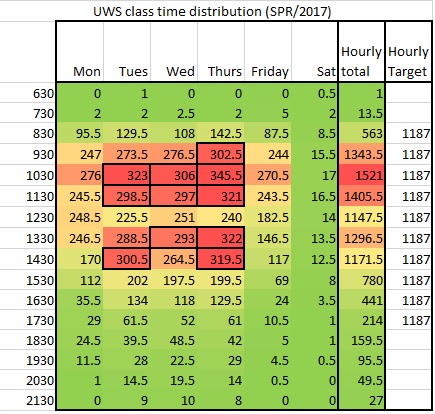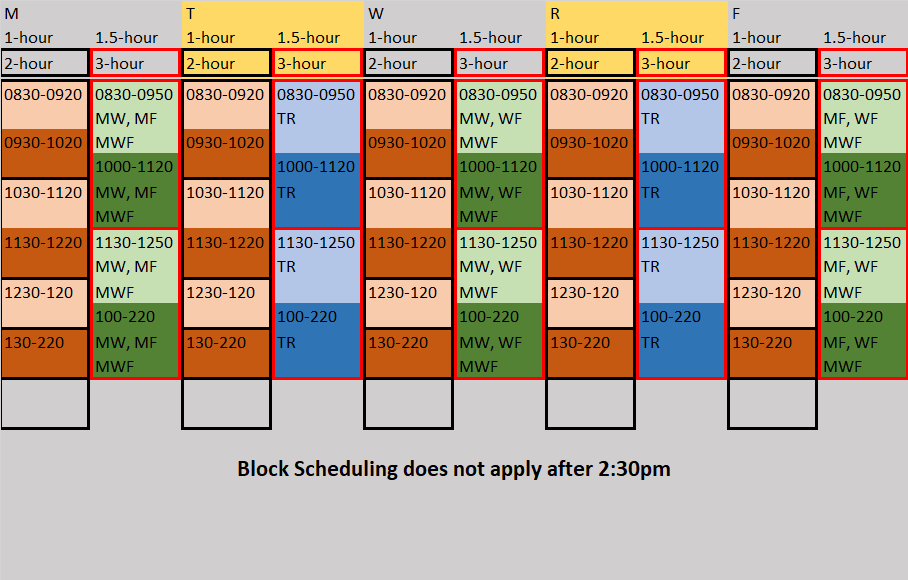Annual Scheduling of Large Classes
One of the recommendations of the Learning Spaces Policy is the annual scheduling of large (250-size and above) classes. This page will detail the process, as well as address some questions around the scheduling.
Background Information
The Learning Spaces Committee identified one major issue due to the scarcity of large classrooms on campus. Many units are unable to be assigned large classrooms at their desired time and/or size during the initial scheduling phase. Because there are often many dependencies with the rest of a unit’s schedule, it is often detrimental to a unit to have to move a large class after assignments have been made.
To help alleviate this, the Learning Spaces Committee recommended scheduling large spaces on an annual basis prior to the creation of the rest of the schedule. This is to help create some schedule certainty for units to build the rest of their schedule around.
Procedure
- Go to the Annual Large Class Scheduling Form (Google Doc) and submit a request for each large (200-size and above) class you wish to offer for each quarter available on the form.
- For each request, you must also provide a viable alternative time outside of prime time (i.e., outside the 9:30 a.m.-2:20 p.m. instructional hours). This time will be used only if a room cannot be secured at the requested time.
- After the deadline, the Time Schedule/Room Assignments Office will take all requests and schedule the classes, notifying you of what room(s) and time(s) you were assigned.
- For Autumn 2019-Spring 2020 the deadline for submission is November 2, 2018. The Time Schedule/Room Assignments Office will notify you of the annual assignments by November 16.
Large Classes Scheduling FAQs
Large Classes Scheduling FAQs
Knowing the classes slightly smaller than the 250-sized threshold will help the Time Schedule Office better determine annual assignments. The classes that meet the size determined by the policy (250-size and above) will be given priority.
Yes. All aspects of the policy are applicable to the annual scheduling, including preference given to classes that follow the block scheduling guidelines.
This process is a supplement to the larger target of 12% distribution of classes. You are still required to evenly distribute your classes across the instructional day.
The Time Schedule Office cannot guarantee it will be able to assign your requested or alternative times, but every effort will be made to do so. If the Time Schedule Office cannot find you a room at either the requested or alternative times, it will work with you to try to find something that works.
Once the Time Schedule Office has notified you of the annual assignment of your class(es), you may enter those time(s) into TSConstruction. If you enter a time in TSConstruction different than the one you were given for your annual assignment, the Time Schedule Office will use the time submitted in TSConstruction. (If we can, we will contact you to make sure you didn’t just make a mistake in TSConstruction.)
Feel free to email questions to times@uw.edu. This policy is a work in progress and we would like any feedback or questions you may have.
Scheduling in General Assignment Classrooms
Visit Event Services for guidelines to reserve General Assignment Classrooms for University-sanctioned or other non-university events.

